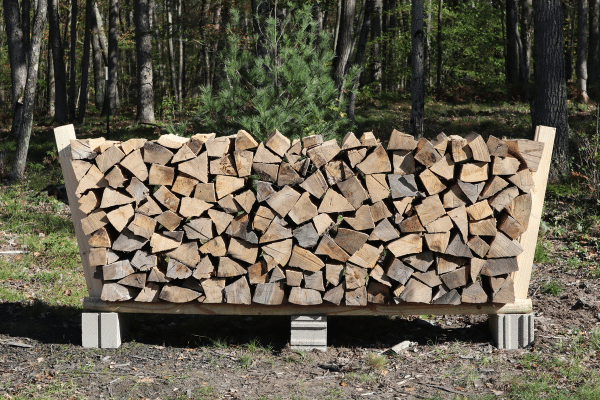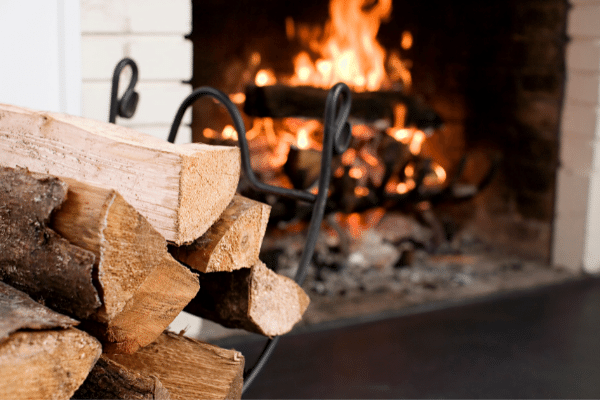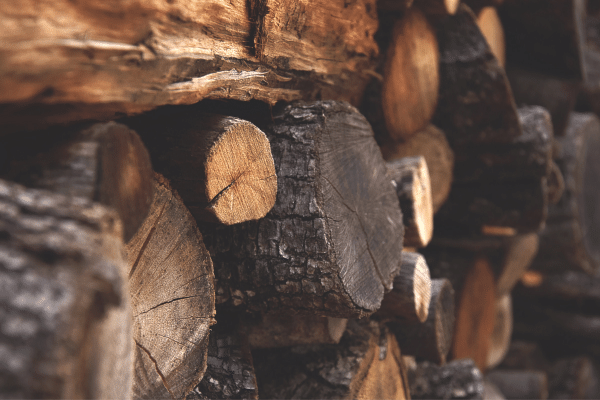- Home
- Storing Firewood
- Is Hemlock Good Firewood
Is Hemlock Good Firewood?
This post may contain affiliate links so I earn a commission.
Species of hemlock are found all across the United States, as well as much of Asia, so when you’re searching for firewood in your backyard, you might find yourself asking....is hemlock good firewood?
While usually referred to simply by the common name “Hemlock,” the term actually applies to a wide variety of tree species within the genus Tsunga.
Under this umbrella, there are a variety of hemlock species with a wide range across all of North America and much of eastern Asia.
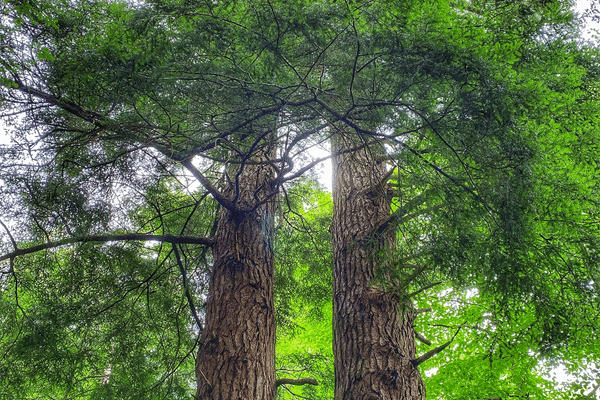
A common point of confusion, especially when it comes to burning hemlock, is that it derives its name from a notoriously poisonous European plant.
Hemlock trees
got their name because they have a similar smell to poison hemlock, a toxic
weed found in the Mediterranean region (but nowhere in North America), which
was famously used to kill the ancient Greek philosopher Socrates.
Despite the name, the hemlock tree is in no way related to the poison hemlock plant.
So when you’re getting ready to throw some hemlock into your fire pit or wood stove, don’t be scared that you might accidentally be releasing deadly fumes into the air.
Using hemlock as a firewood is completely safe.
Is Hemlock Good Firewood To Burn?
Knowing that burning hemlock won’t kill you is a good place to start, but it still doesn't answer the question of whether or not hemlock is good firewood.
For starters, hemlocks are softwood trees.
This means that, like pines, furs, spruce, and larches, hemlocks are coniferous trees that grow tall and relatively quickly, making wood that isn’t as dense as the wood of a slower growing deciduous tree such as an oak, a maple, or an ash tree.
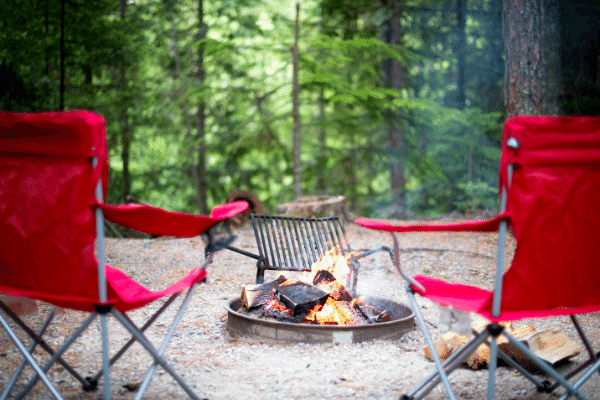
So while hemlock is completely fine to burn, it is never the top choice of wood burning
purists simply because the less dense wood leaves something to be desired.
Hemlock actually burns decently hot for a softwood, but it burns quickly and without leaving behind good coals to relight in the morning.
If you’re burning hemlock in an outdoor fire pit or for a campfire, this shouldn’t be too much of a problem, but for use in a wood stove or fireplace to heat your home, you might be better served with a different wood.
How To Identify A Hemlock Tree
While each species of hemlock tree has a slightly different set of characteristics, they all follow a general pattern that will allow you to pick them out from amongst a dense coniferous forest.
One of the easiest ways to spot a hemlock is by looking at its crown.
Hemlock trees prefer darker areas, and the saplings grow up from under the shade of larger trees.
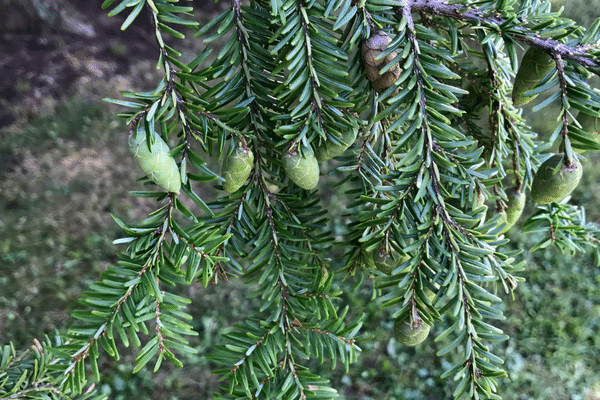
Their leading point usually has a
telltale droop like the floppy tip of a pointed hat, pointing in the direction
of the prevailing wind, which has pushed its way up through the canopy.
Looking into the branch structure, hemlock trees have a similar look to fir trees, where the needles grow directly from the branch rather than in clusters like you’d find on a pine tree.
Unlike firs, however, hemlock needles are very flat and dark green, and grow from the branch in flat splays rather than spiraling around the twig.
Availability Of The Tree For Firewood
Maybe the most compelling reason to use hemlock for firewood is because of its availability.
Between the Eastern Hemlock, Western Hemlock, Carolina Hemlock, and Mountain Hemlock, there’s a good chance that any North American has a species of hemlock that’s native to their region, and fairly prevalent in their area.
And while it’s no one’s first choice to use for firewood, it’s a heck of a lot better than no wood at all.
As always, anything with easy availability is a nice option to burn.
Cutting And Splitting Hemlock Firewood
For folks who harvest their own firewood, having a tree that is easy to work with is a huge bonus.
Is hemlock good firewood to cut and split?
Yes!
The tall, straight trunk of hemlocks, like most coniferous trees, makes falling snags easier, and when bucking up the wood, you’ll be pleased to find that it’s not as much of a sappy mess as most pine trees.
Because of the lack of sap, hemlock can cure a bit faster than most other softwoods, but usually it's best to give them 6 months to a year just to be safe.
How Well Does Hemlock Firewood Burn?
Once you’re all set and ready to put the log into the fire, how well can you expect your hemlock wood to burn?
As mentioned before, the heat output from hemlock is good at 19.3 million BTUs per cord, but the longevity is not.
It doesn’t burn as long as a hardwood, and in general, I usually prefer Douglas fir as a softwood alternative.
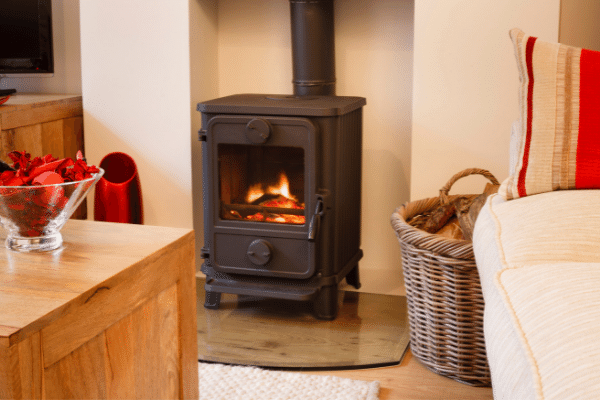
However, once
it’s cured, it splits very easily, and the light structure and hot, fast burn
of the wood makes it light up exceptionally easily.
Because of that, It's one of my favorite woods to use for kindling if I have other logs of denser woods to burn as well.
Other than being great for kindling, hemlock is a fantastic campfire or fire pit wood.
It burns hot and fast, smells nice, and doesn’t produce too much smoke.
Plus, burning down to askes rather than coals is a nice bonus when you want to make sure your fire is completely out at the end of the evening.
Is Hemlock Good Firewood - Overall
Hemlock isn’t the greatest option out there for heating your home, cooking, or building a long lasting fire.
But if you happen to have access to a hemlock tree, it’s still a great firewood with a ton of utility.
Like I always say, the best firewood is the one in your fire.
It lights up easily, and burns well, and if you have a whole stack of it seasoning in your backyard, saying yes to that extra bonfire, campfire, or fire pit evening gets that much easier.
Hemlock is a great wood to have on hand as a source of kindling, or for simply building a quick, relaxing fire.
